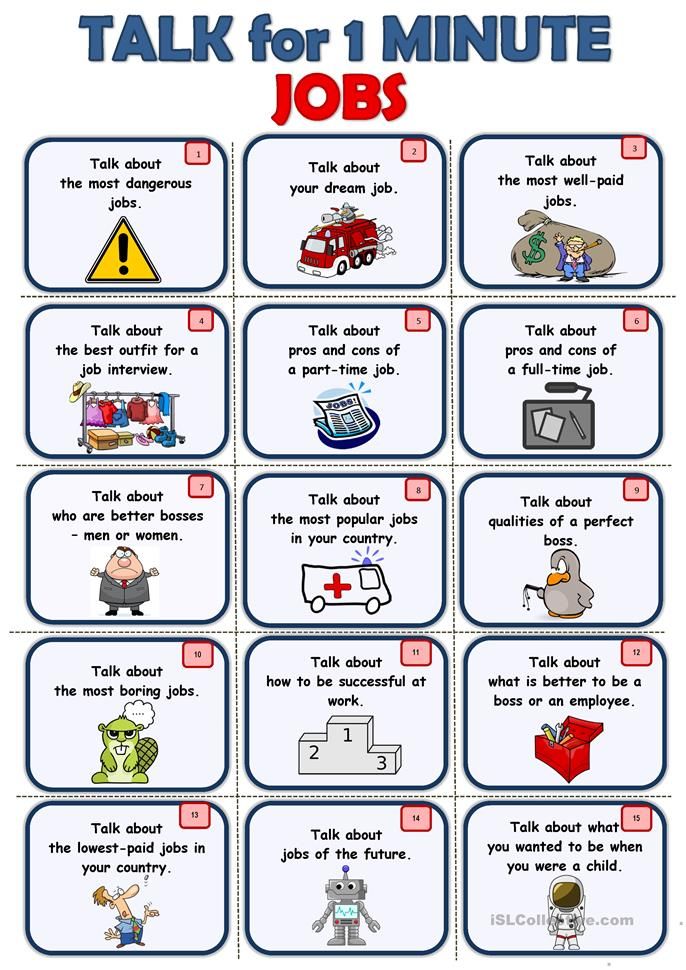When the temperature gets well below, it’s important to warm your engine before tearing it up.
ATV warm-up time will depend on ambient temperatures and where your ATV is stored. A typical winter warm-up time is five minutes at idle.
In this post, you’ll learn why warming even a modern ATV engine makes good sense. I’ll also share the one thing you should never do to your ATV, especially in cold weather.
I warm my ATV for about five minutes, which is plenty long to get the oil pressure up and everything oiled.
Never gun the throttle when the engine is cold. This is what causes piston and cylinder wear. Most ATVs are four-stroke, and that means they have a conventional oil pump pressurized lubrication system. Oil takes time to move around the engine. Engine load needs to be at a minimum until oil pressure builds.
Two-stroke engines, as you know, use a lubricant in the gas to help cool and protect. No matter two or four-stroke, all ATVs should be warmed up a little before taking the RPMs above idle.
There’s no need to let your engine idle for longer than five minutes, as your engine is now safe to use and will reach optimum operating temperature more quickly on the move.
Storing your ATV in a heated garage would be pure luxury and would reduce warm-up time to pretty much start and go. But that’s not practical for most. A second-best option is to use an insulated blanket and an insulated board under the bike.
This actually works quite well and makes a difference to bikes stored either outdoors or in an unheated garage. Consider fitting an oil pan heater. Anyone living in very cold climates is very familiar with plugging their car into the mains at night, not to charge it, but to stop it from turning into a block of ice.
The oil pan heater is an electrically heated pad with a cord. You stick it to the oil pan and plug it in at night. It keeps your engine toasty all night. Like an ATV electric blanket, feel that love!
Like an ATV electric blanket, feel that love!
A four-stroke ATV engine has an oil sump filled with oil and an oil pump which pumps and sprays oil on all the internal moving components. Without oil, as you know, your engine is at risk of serious damage.
After shut down, the oil drains back to the oil pan, and so your engine is always at the most risk of damage, right at start-up.
The longer it takes the engine to get the oil moving, the more the risk. This is an issue in winter and summer but a much greater risk in winter as the oil is heavier and won’t move as quickly as warm oil.
OK, so you know oil is the most important defense against engine damage, especially on cold starts. So it makes great sense to check your oil level regularly and change your oil, clean/change the oil filter before the colder morning temperatures set in.
You’ll need to use the oil type specified in your user’s manual and pay particular attention to the oil charts. The oil type for your engine is recommended by the manufacturer, but they also include an oil ambient temperature chart.
The oil type for your engine is recommended by the manufacturer, but they also include an oil ambient temperature chart.
Your region’s ambient temperature dictates the oil type you should use. Modern synthetic engine oils are engineered to cope with cold weather starts. The oil is designed to cling to metal components even after shut down and remains viscous even in low temperatures.
But ATV owners will only have this protection if they use the correct grade oil and change it regularly.
I tell my customers, “Never use incorrect oil in your engine,”, especially in the colder months. Single-weight oil isn’t up to the job of protecting your engine. Different grade oils shouldn’t be mixed for top up’s either.
Changing your oil is great, but don’t forget to clean or change your oil filter, whichever your engine has. The oil is pumped around your engine in a circuit and passes through the oil filter where the contaminates are caught.
Although your oil filter incorporates a safety bypass valve, if the filter clogs, oil can still get to where it’s needed, but that’s not something you want to test, right!
ATV won’t start in cold weather? Check that your choke control is working correctly. A choke will be needed in cold temperatures. In extreme conditions, moisture in the fuel lines can freeze, blocking fuel flow.
A choke will be needed in cold temperatures. In extreme conditions, moisture in the fuel lines can freeze, blocking fuel flow.
You may find the following posts useful:
Riding bike without coolant
How often should I start a bike?
How to start a flooded bike?
A day out with your ATV is a ton of fun until the engine overheats. Knowing the common ATV overheating symptoms is the first step in dealing with this issue, and ideally, finding a fix. Being aware of ATV overheating symptoms is also critical in ensuring that you stop riding right away to avoid major engine damage.
The clearest indicator of an ATV overheating is a warning light (if you have an instrument cluster with an overheat warning). Of course, not all ATV overheating symptoms are this clear to understand. You may notice power loss, or fluids, such as oil, dripping or leaking. You might feel the engine heating up, with a case that is hotter than usual. Pay attention to a sweet scent, which is the coolant burning, and look out for steam. You might also notice a ticking noise in the engine if you listen closely enough. That is oil burning off as the engine heats.
Pay attention to a sweet scent, which is the coolant burning, and look out for steam. You might also notice a ticking noise in the engine if you listen closely enough. That is oil burning off as the engine heats.
The first sign will likely be that burning coolant smell. Around this time, steam may be coming from the radiator. If you notice this or any other ATV overheating symptom, try to stop safely, especially if you’re at the point of a ticking engine. If you ride longer, the piston will expand and seize.
An ATV might overheat and display the symptoms above for many reasons. First, check the radiator. ATVs often tackle a lot of dirt and mud, which might wash off the exterior of your machine while still clogging the rad. Cleaning the radiator removes dirt and clogs and ensures fluids remain cool.
You should check the coolant or radiator fluid while you are there. A simple coolant tester goes a long way. It may be the wrong type or mix, too old, or too low. Other parts of the radiator to check include the fan, to make sure it’s running, and the hose. Also check the cap to ensure that it and the gasket are creating a strong seal. If the thermostat in the cooling system is faulty, your engine can overheat too.
Other parts of the radiator to check include the fan, to make sure it’s running, and the hose. Also check the cap to ensure that it and the gasket are creating a strong seal. If the thermostat in the cooling system is faulty, your engine can overheat too.
Monitor the ATV’s water pump or impeller. These often leak or ultimately fail thanks to bearing issues. You should also consider your ATV engine tuning, ensuring it is done properly to avoid excess heat.
Is your ATV air-cooled? If so, moving air is an important element that does not work well during prolonged idling. If you are riding an air-cooled ATV, be sure to shut the machine down if you are stopping for a longer period.
Finally, no matter what type of ATV you drive, hot weather could be the problem. Your ATV may have a hard time operating well in the heat, especially with a heavy load. Even if there is nothing wrong with the machine, hot climates can overwhelm the cooling system, so you may want to sit out the ride.
As with many ATV issues, a bit of work in the present can prevent issues later on. One key aspect of avoiding ATV overheating is making sure the radiator is always as clean as possible. Remove the detachable screen and wash it with a hose or pressure washer. Then use a hose to clean the radiator fins. Be careful here, as the fins have to stay in the same shape to work well and cool the machine.
Similarly, regularly maintain the coolant as part of your schedule. Use that handy coolant tester. Your ATV manufacturer should provide recommendations on how often to flush and change the coolant. Between those complete changes, check and test the fluid at least every few months.
You can add a few aftermarket items to improve your ATV’s cooling abilities, such as an electric radiator fan. An aftermarket water pump and impeller can improve capacity. A high-pressure radiator cap can help keep your engine cool even if you’re low on coolant.
For issues like that of a faulty thermostat, you can try tests at home. Hang it in a pan of heating water and watch to ensure the thermostat opens fully at 10 to 15 degrees above its rated temperature.
As with most ATV issues and their fixes, if you find the DIY approach is not solving your overheating problem, it’s time to talk to a pro. An experienced ATV mechanic can help you determine why your machine is overheating and how you can prevent that problem going forward. A seized piston means your ATV is broken far beyond any kind of DIY fix, so attempt to deal with it long before you get to that point.
Disclaimer: While we endeavor to keep the information on our blog up to date and correct, Maxtrade (Coolster) makes no representations or warranties of any kind, express or implied about the completeness, accuracy, reliability, suitability, or availability with respect to the website or the information, products, services, or related graphics contained on the website for any purpose. Any reliance you place on such material is therefore strictly at your own risk.
Any reliance you place on such material is therefore strictly at your own risk.
Launch
- Before starting, it will be convinced of the correct position of the reverse lever
- Do not hold the Start button more than 15 networks
- when starting, do not press the accelerator lever
,0002- it is important that it is important that it is important that the engine is normally warmed up before being used. Allow the engine to run for at least 3-4 minutes until stable idling. In particularly cold conditions, the engine takes longer to warm up and the warm-up time increases. Cold seizing (cold seizing) and piston wear (when seizing), otherwise known as “four-way scuffing”, caused by operating the ATV with a slightly warm engine, is not covered by the warranty. After warming up, the engine should be warm
MANDATORY BEFORE DRIVING
- check: brake operation, auxiliary engine switch, electrical equipment, suspension mounting bolts and nuts, tires, front suspension elements, steering systems, engine and transmission oil levels, passages and operation cooling systems
- remove dirt, and in winter from snow and ice, drive shafts and steering rods, check their free play
DO NOT ALLOW
- prevent overheating of the engine and running gear; to prevent overheating, regularly drive into mud (wetlands), in winter - deep snow
- heavy load (high speed, intensive acceleration, etc. ) on the engine immediately after starting it and insufficient warming up
) on the engine immediately after starting it and insufficient warming up
- long operation in difficult conditions
- long driving in mud, sand
- turning off the ignition at speeds above idle, this can lead to a flash of the fuel mixture in the crankcase, which leads to isoflex grease being squeezed out of the engine and its failure
- engine overheating.
The main features of overheating
1) The engine does not develop speed and power
2) ATV does not develop a maximum speed of
3) high engine temperature, extraneous smells, noise
Bkatka
- duration of 500 km
- it is not allowed to fully open the throttle valve (more than ¾), it is necessary to make short accelerations and move at different speeds
- do not carry trailers or loads
- do not drive at high speed for a long time
- do not allow the engine and chassis to overheat
- regularly check the oil level in the oil tank; for reasons and contact your dealer
- during the first 50 km the drive belt is run in (every time a new one is installed). During this period, intensive acceleration and deceleration, long movements at a high speed of more than 60 km / h should be avoided
During this period, intensive acceleration and deceleration, long movements at a high speed of more than 60 km / h should be avoided
In the event of a malfunction, call (3412) 75 08 08, 8963-541-41-11
| ATV Model/Conditions |
|
| Petrol | unleaded with min. 95 octane
|
| Engine oil |
|
| TO | TO1 after 10 hours or 500 km - TO2 annually, 100 hours or every 3000 km - subsequent yearly, 100 hours or every 3000 km |
| Preservation | - it is necessary to add an antioxidant to gasoline (as recommended by the owner's manual or dealer) to prevent possible engine failure - seasonal conservation, re-preservation nine0082 |
Most ATV riders feel that their ATV becomes unusable in winter. Many simply "preserve" their equipment in the garage and wait for the arrival of spring. But what about those who cannot live a week without their iron pet? Everything is simple. It is enough to follow the basic rules for operating an ATV in winter.
Wash
nine0002 First you need to thoroughly wash your ATV. Firstly, it will help to notice possible damage to technical units that were previously hidden under a layer of dirt or dust. Secondly, it will help to avoid freezing dirt. And this, in turn, can lead to serious damage to the hull and internals of the equipment.Oil
Use only synthetic and quality oil. It will help start the engine at low temperatures. In addition, the performance of an ATV engine will be much better with quality brand name oil than with cheap Chinese counterparts. nine0005
Cooling system
We carefully check the cooling system, drain water from it, fill in antifreeze or antifreeze.
Tires
Be sure to check the tire pressure. Judging by the experience of drivers, the best option would be a pressure of 0.5 - 0.8 atmospheres.
So now your ATV is ready for winter riding. Let's move on to the next step - the rules for riding an ATV in the winter. nine0005
Preheat
The engine must be warmed up. In winter, the warm-up time is approximately 5 minutes. It should be noted that insufficient heating will certainly lead to wear of technical components or even serious damage.
Cleaning
Thoroughly clear snow from the ATV after each ride. The same applies to the equipment that winters on the street. The ATV must be free of snow and ice before using it. nine0005
Battery
The battery must be charged before every ride. It is worth noting that in the cold, its energy reserves are consumed much faster than usual. It is also recommended to remove the battery after each ride and take it to a warm place.